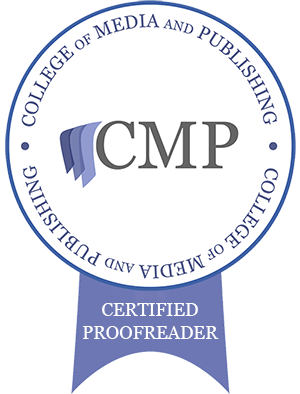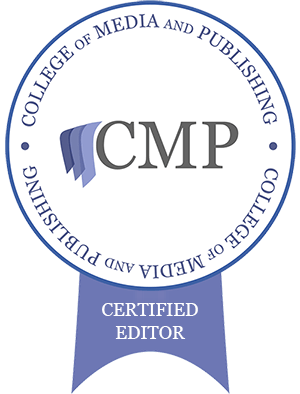
What is Mary Sue Syndrome?
The term ‘Mary Sue’ is one that has been used to describe a character archetype that is too perfect. It originated in the Star Trek fandom in a parody fanfiction. It is an archetype that is especially common in fanfiction. Essentially it is a character, usually the primary protagonist, who has amazing skills, is extremely attractive, has unique abilities and no weaknesses. They have no real flaws, any flaws mentioned are usually meaningless and inconsequential.
The archetype is generally considered a ‘self-insertion’, a character that represents an idealised version of the author themselves. It’s common for them to be female. Although you do see male characters too, often named Marty Stu or Gary Stu. Again, this is a generalisation but they are often written by adolescent authors, especially in fanfiction, as a way to insert oneself into a fictional world.
What is Wrong About a Mary Sue?
These characters are a sign of poor quality writing, and most people don’t like reading them. There’s a number of reasons for this. For starters, these characters are perfect, unique and all powerful. They have no real weaknesses, win every fight easily and can pass any challenge with little difficulty. If they have flaws at all, they tend to be pointless things, like being too trusting or being too modest despite being so brilliant at everything. It’s boring to read.
One of the reasons that many characters are loved is because of their flaws and weaknesses, and the character development they go through during the story where they overcome these things. You can’t learn and grow, if you’re already perfect. When the challenges posted by the plot are so easily overcome, there’s no tension or excitement. It becomes predictable, when the Mary Sue can just pull a ‘deus ex machina’ out of thin air for every potential issue.
Unique and Special Appearance
Their appearance is incredibly beautiful and otherworldly, unique and often with unusual eye or hair colours and an elaborately overdesigned outfit. Everyone else will see how beautiful she is but her, because she is so modest and shy. The descriptions are on another level as well, often falling into what is termed ‘purple prose’. Excessive descriptions with minute details, paragraphs of adjectives to the point where it becomes tedious to read.
You can spot these situations easily, as only the Sue will merit this kind of description. Other characters will be lucky to get more than two lines to describe how they look. All the other characters are mundane and average, with little to set them apart. Any physical flaws will only enhance her beauty, or remind her of her Dark and Traumatic Past (which they always have but are rarely actually affected by).
How to Spot a Sue in the Wild
You’re probably already sighing and rolling your eyes at some of the points I’ve made. That tells me you’ve read this kind of thing before, and certainly if you’ve read fan fiction at any point, you will have seen it. You’ve probably written it at some point, let’s face it, most of us have. It’s fun, to insert yourself into your favourite fictional world and interact with all the characters you know and love. Well, it’s fun for you. It’s probably not as interesting for other people to read.
Even so, there’s plenty of characters in pop culture that could be considered Mary Sues. It is often a matter of opinion and debate. Many people will cite Bella from Twilight, Anastasia from Fifty Shades of Grey and James Bond as clear examples. Personally, I can agree with that. Anastasia goes out of her way to be described as plain, boring and unremarkable, yet this millionaire tycoon with a skewed view of a BDSM relationship is enthralled by her.
Obviously, plenty of people enjoy these stories and these characters, and that’s okay. It’s not to my tastes, but it’s not up to me to judge other people for what they like. Some characters Sue statuses are hotly debated online, like Rey from the Star Wars sequels or Arya Stark in Game of Thrones (TV) being the big hero in the end, when it was set up for Jon Snow or Daenerys Targaryen.
Not Every Self-Insert is a Mary Sue
This is an important fact to remember. Not every author self-insertion is automatically a Mary Sue, or a bad thing. The point is that most people will want a bit of realism, even with the protagonist of a story. People who are realistic are easier to relate to. We want to be able to cheer when they succeed, but also sympathise when they fail. People like to read characters that are like them, in essence, not perfect. Most of us struggle to see our positive traits and tend to focus on the negative things about ourselves. Seeing characters overcoming these negative traits reminds us that we can do the same. The key is balance.
This is absolutely a matter of opinion in some cases, and realistically some genres almost require your protagonist to have some Mary Sue like qualities: look at Superman and many other comic book heroes. Superman has all the superpowers, strength, speed, ability to fly, invulnerable, laser eyes, and whatnot, including the ability to apparently fool everyone by putting on a pair of glasses. We do want to read about protagonists who are interesting, and a bit above average in some ways.
Further Reading
There is a lot of information out there about this trope, and a lot of discussion. So I’ll share a few links where you can read more. One of the best known fanfiction examples is ‘My Immortal’, a notorious Harry Potter fanfiction. I’m still convinced it is a parody of the entire trope, but who knows.
- TV Tropes: an extremely thorough analysis of the Mary Sue trope, the variations and examples.
- The Original Mary Sue Litmus Test: a test produced by Dr Merlin way back in 1997 for evaluating your own characters. This isn’t new!
- PPC Wiki Litmus Tests: a whole list of litmus tests, some adapted for specific fandoms.
- My Immortal Wikipedia Page: all about the infamous ‘My Immortal’ HP fic, it is possible to find it online although the original posting on fanfiction.net is no longer there. It’s quite… something. I read it in its entirety back in the day.
- My posts on Characters: introducing your characters and when your characters develop a mind of their own. More to come soon!
- Finally, my post on cliches, which often come into play when we’re talking about Mary Sues.
So, hopefully you found that interesting, there’s a lot to read on the subject and a lot of debates and discussions to be found online. Keep an eye on the blog as I will be covering more topics in characterisation and writing characters going forward. Subscribe below to get notified whenever new posts are up. Follow me on my social media channels for more little bits and if you want to talk about working with me on your writing, drop me a line! Until next time!














